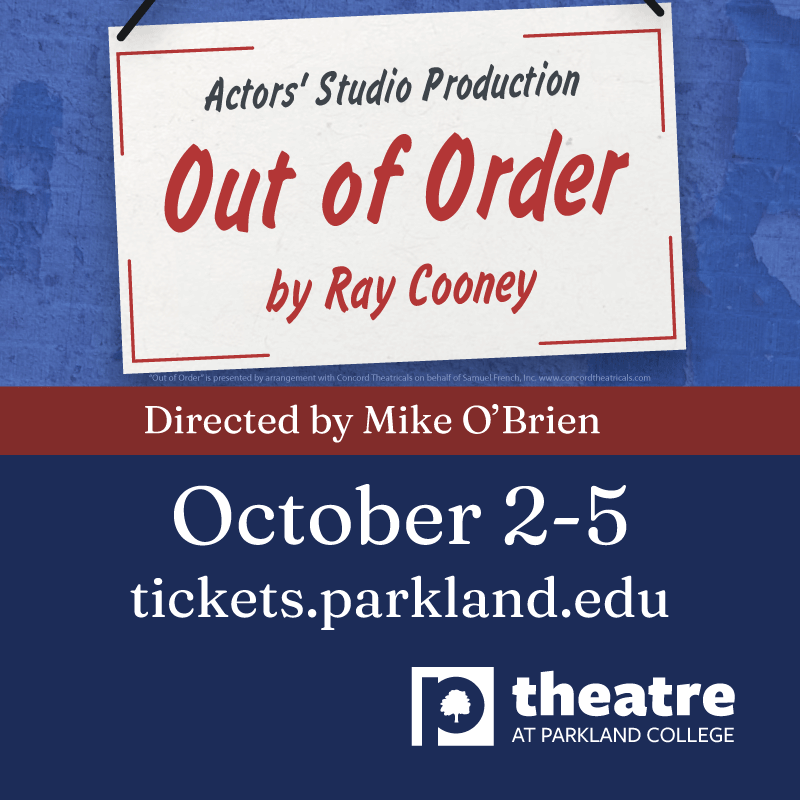This article is the fourth in a six-part series that addresses concerns five Mahomet-Seymour High Schoool students have about their environment at school. During an interview about school safety, these students discussed a multitude of issues that, they believe, lead to an unhealthy learning environment. These students come from different backgrounds and grades. To protect their identity, their names have been replaced with numbers. The Mahomet Daily shared all articles with district administration and gave 20 hours for comments. No comments were received.
Links to the additional articles: Introduction Commentary, School Safety Article, Academic Pressure Article, Sexual Harassment/Sexting Article, The Corner Pieces
“I think loneliness is very easy to manifest itself in kids in Mahomet,” Student 4 said.
Five students who recently came together to talk about school safety said that the environment at Mahomet-Seymour High School breeds social and emotional issues that can leave students either hurting themselves or threatening others.
“There is a lot of emotional abuse between students that goes unreprimanded,” Student 4 said.
“A lot of it comes off as joking,” Student 1 said.
“But inside it really actually hurts you,” Student 2 said. “And people are laughing about it. And you’re like, ‘Okay, I didn’t know whether to laugh or not because I didn’t think it was funny.’”
Sometimes the jokes revolve around a student’s race or ethnicity, other times it’s their gender or sexual orientation. Sometimes it’s social pressure to not show emotion among boys and other times it stems from one group just not liking a particular person.
“A lot of people are racially motivated,” Student 2 said.
“Recently, there was a video of students from Mahomet saying the “n” word. They were just singing, but they were on social media representing Mahomet,” Student 2 said.
One of the five interviewed students, who is multiracial, said, “Every single day I’m in Mahomet I feel like more of a minority.”
One student has experienced hearing a friend, who is an African American and adopted by white parents, be called a “dipped cone.”
And listening to friends apologize for their parents when Student 3 asks for a ride creates the feeling of being an outsider.
“They’ll say, ‘my dad is racist. I’m sorry,’” Student 3 said.
The student also experienced forming a friendship at school, but was told, “I can’t hang out with you because of my parents.”
“When you’re growing up, the adults in your life are role models,” Student 3 said. “If they are constantly angry or displaying acts of hatred towards another person, then that’s all that kids grow up to know, no matter how many (times they) are exposed to something different.”
“These kids are the same people we are warned about in history textbooks,” Student 3 said. “History is constantly repeating itself and we aren’t doing anything to stop it this time. We are told, ‘they are just kids having fun; they don’t know what they are saying.’”
“They know how much it hurts, even if they haven’t experienced that pain. They know it does something to someone.”
The students feel that hurtful comments are not met by adults with the response needed to end the behavior. They said that the comments are often brushed off as jokes.
“It’s not a joke when it is making kids upset,” Student 2 said. “It’s making kids cry and not able to do work because of how (they are being treated).”
Students recalled an extreme social media bullying situation that went unaddressed a few years ago.
While they were in high school, the targeted student was in junior high school.
“Three different social media accounts were dedicated to wanting (the student) to kill (themself),” Student 3 said.
“(The student) had to drop out of school for a couple weeks just to get (straightened out for) being bullied so bad.”
With the prevalence and availability of technology district-wide, students would like to see education programs put into place so that students can not only learn about each other and sensitivity, but also so that they completely understand the ramifications of their actions.
“I don’t think they understood if (the student) really did kill (themself), that they’d be in a world of trouble and could go to jail,” Student 3 said.
Student 4 and 2 said that the issue continues to grow, though, as they feel nothing is ever done to stop students who are continually posing a threat.
“Nothing ever gets done about stuff like that,” Student 2 said. “Like online threatening. Nothing happens.”
“‘Because ‘it’s out of their hands,’” Student 3 said. “‘They can’t do anything about it.’ But when a student is being bullied by other students in the school and it’s to the point where that one student is actually thinking about killing themselves, there is something they can do. They just don’t.”
“I think there needs to be more social reprimand for really bad things,” Student 4 said. “For example, there have been multiple cases of kids at the high school egging on girls who are cutting themselves just because (the person harassing them) is sadistic.”
“Or egging it on so then they (the victims) just feel worse,” Student 2 said. “That individual feels worse about themselves, so they do it again.”
All five students were aware of this widespread practice.
“I don’t think it is addressed by teachers who see it,” Student 4 said. “They will just see a girl or a guys’ arm that is cut up and they’ll just look away.”
Student 3 said that teachers were very concerned about a knee injury, but feels invisible when coming into the classroom with a red and puffy face from crying in the bathroom for 45 minutes because of a grade.
“They just look at me (with a puffy face from crying), then look away,” Student 3 said. “The things that they can’t see, they don’t want to talk about.”
“I think that our real emotional issues are just pushed aside as angst most of the time, and they are not addressed because ‘teenagers are angsty,’” Student 4 said. “But if a kid wants to kill himself it is not because of angst, it’s because of genuine problems.”
The students said that male students often have a harder time finding someone to talk to.
The Freshmen Mentor Program (FMP), that partners juniors and seniors with freshmen based on gender, receives recognition year after year, but the interviewed students said the program is just another avenue for disconnect.
“I just think how they pick mentors is a little unfair in my opinion,” Student 5 said.
While juniors and seniors have to go through an application and interview process to become a FMP mentor, the students have seen a pattern of only the “popular” students being selected as mentors.
“The first question on the sheet is what are all the activities you are in?” Student 1 said. “It’s about how popular you are, what you do in school and outside of school.”
Recently sophomores and juniors were presented with the opportunity to apply to be a mentor.
“This kid who has autism in our class raised a hand when the teacher talked about applying for the mentor program, and all I could think is that isn’t happening,” said Student 4.
Mentors are chosen by application and interview, which includes how many activities they have been involved in during their time in high school, in hopes that they will be able to reach a large segment of the freshmen population as they adjust to high school life.
But the students believe that choosing only students who are involved in many activities provides a disconnect for much of the school population.
“These kids need someone they can connect to,” Student 3 continued.
Student 5 witnessed struggling freshmen boys looking to connect with their upperclassmen counterparts, but “their mentors were kind of bullies.”
“Some of my friends went to their mentors and (the mentors) were like, ‘That’s not really a problem, you will figure it out, get over it.’
Now an upperclassman, Student 5 sees that “you should be there for your freshmen if they have an emotional problem going on.”
Students 2 and 5 took their concerns to one of the sponsors of the FMP program.
“I talked about how we need a variety of people and how people who aren’t in a lot of activities need to be represented as mentors,” Student 2 said.
Both students felt like their concerns or ideas were disregarded at the time.
The five students who spoke want to see student emotional and mental health issues addressed in a consistent manner while also having access to additional school counselors who will listen to their concerns and questions.
Students said with one school counselor, whose day is filled with multiple responsibilities, it is often hard to find a compassionate ear.
“She’s at the school all day, but she’s just in different parts of the building,” Student 3 said. “I go to her room and she’s not in there.”
“I know that some schools (nationwide) don’t have someone there all day, so I think we should put more spending into having (additional social) counselors,” Student 5 said.
Because students are searching for an avenue to direct their thoughts and questions, they said they turn to technology to find an escape.
“It seriously affects our mental health,” Student 3 said. “I had a friend who smashed her phone, she was so upset with it. It turns out that she had (a mental health issue), but the thing is that we never know if we actually have serious issues because we are just hiding all of the time.”
The group said that they feel millennials get a rap for being bad communicators, but that communication isn’t the problem.
“We’re good at communicating on our phones,” Student 2 said. “That is what we are good at. We’re really good at texting people, really good at snapchatting, really good at posting, but I think we are bad at connecting with someone in person.”
For this reason, the students would not only like to see the district hire more school counselors, but also have mandatory individual meetings with the counselor once or twice a year.
“Kids feel out of place if they (see a counselor) because no one else is,” Student 4 said.
“I think more access to social counselors,” Student 4 continued. “I wish that were a normalized thing.”
Student 1 said the mandatory meeting would be great for the majority of the students, but that confidentiality could be a problem.
“The problem with school social workers is that everything you say goes to your parents. If I haven’t turned to my parents already, why should I turn to them (social workers) if they are going to turn to my family?”
The students would also like to see the stigma of mental health issues to be diminished through education.
They also felt mental health issues were glossed over in health class. The students would like to see the curriculum include additional discussion and resources throughout their time at Mahomet-Seymour.
“I remember freshmen year when I was taking health, we went over mental health issues for a week and half,” Student 3 said. “We took a test on it, then that was the end of the discussion.”




